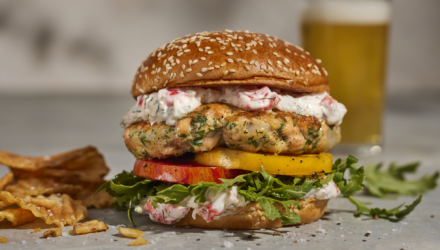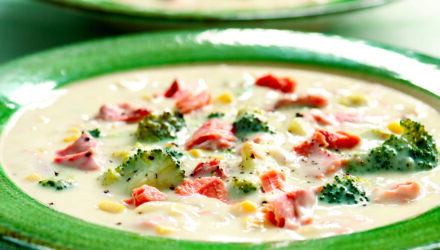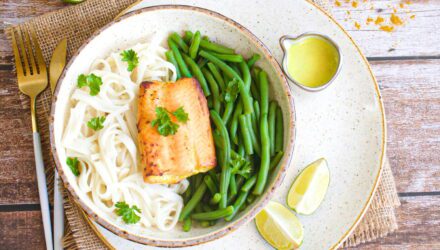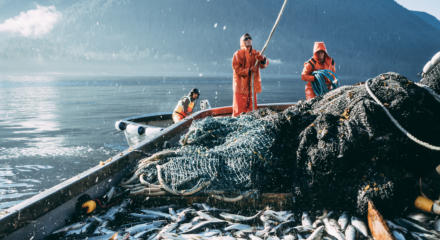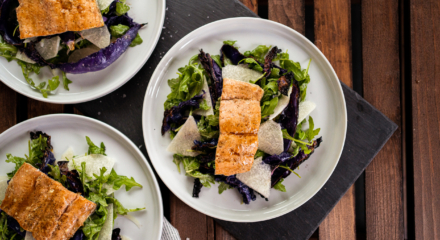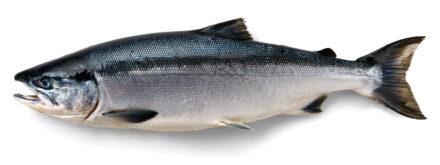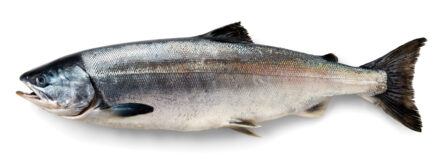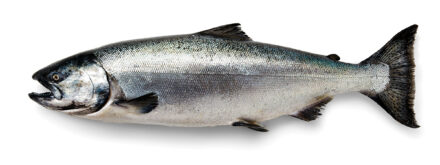
Pink Salmon
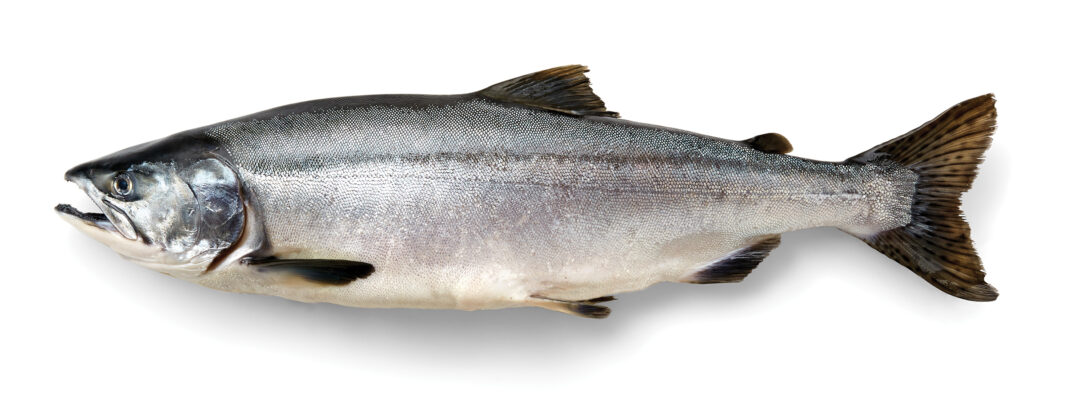
Pink salmon has a light, delicate flavor great for roasting or grilling, or topping with your favorite sauce.
Watch the video
-
Scientific Name: Oncorhynchus gorbuscha
-
#1
The smallest of the five species of salmon, wild Alaska pink salmon is the #1 most abundant of the five species.
2 certifications
The Alaska pink salmon fishery is certified under two independent certification standards for sustainable fisheries, RFM & MSC.
2 years
Wild Alaska pink salmon have a 2-year life cycle making odd-year and even-year populations which do not intermingle.
-
Nutrition
-
Protein21gVitamin B-124mcg (167% DV)Omega 3524mgVitamin D11.1mcg (74% DV)
Wild Alaska pink salmon is chock-full of lean, high quality protein.
Benefits of complete high quality protein include building and maintaining lean body mass, metabolism regulation, improved satiation—leading to lower intake and possible weight loss, and stronger muscles, resulting in greater mobility, strength, and dexterity.
Wild pink salmon also provide marine derived omega-3 fatty acids, essential to the human body. DHA and EPA in wild Alaska pink salmon are the most studied, beneficial, and readily usable healthy fats for the body.
Benefits of DHA and EPA are improved heart health, improved brain function and they are vital nutrients for growth and development of prenatal babies and infants.
Learn MoreDV = Daily Value // 3.0 oz = 85g Source: USDA Standard Reference Release 28
-
Harvesting & Seasonality
-
Alaska pink salmon are available fresh from mid-June through September and frozen year-round.
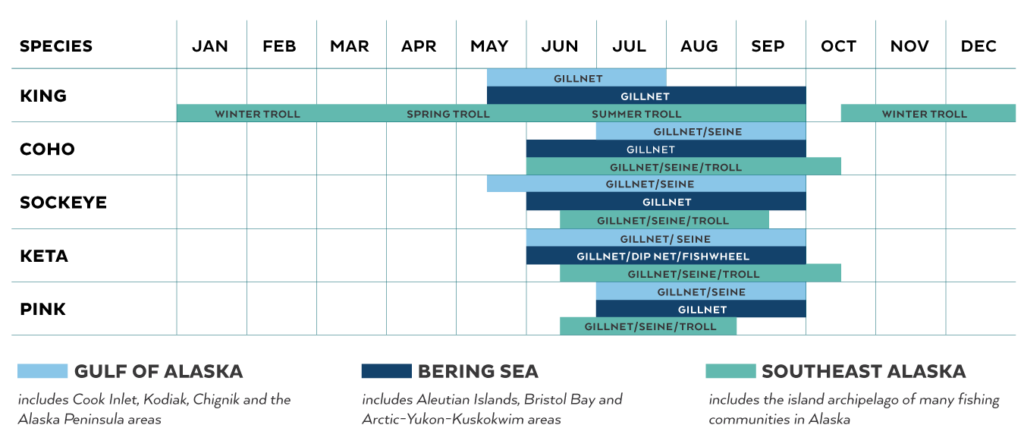
Alaska pink salmon are harvested primarily by gillnetting and purse-seining.
Learn More -
Sustainability & Environment
-
In Alaska, the future of wild pink salmon and the environment are more important than the immediate opportunities for harvest.
As a wild resource, there is variability in the number of salmon that return to freshwater to spawn annually. Managers in Alaska set ‘escapement goals’ using the best science available to ensure enough fish return safely to the freshwater spawning grounds to reproduce. Biologists account for natural fluctuations in returns of salmon by managing the fisheries in-season to ensure the sustainability of Alaska’s wild pink salmon.
This principle of sustainability is written into Alaska’s state constitution. In Alaska, fish are to be ‘utilized, developed, and maintained on the sustainable yield principle,’ ensuring wild pink salmon inhabit Alaska waters for generations to come.
Wild Alaska pink salmon also have cultural significance. Alaska’s coastal communities depend on subsistence salmon fishing to survive. Subsistence has priority before sport, commercial or personal use fishing.
Certification
The Alaska pink salmon fishery is certified under two independent certification standards for sustainable fisheries:
- Alaska Responsible Fisheries Management (RFM)
- Marine Stewardship Council (MSC)
Pink salmon have a complex life cycle; swimming from freshwater to the ocean as soon as they are hatched, and spending 18 months in the ocean before returning to freshwater to spawn.
Wild Alaska pink salmon is the smallest, and shortest-lived species of Alaska salmon, typically weighing 3-5 lbs. and living for only 2 years and due to their rapid reproduction, they are also the most numerous species.
Learn More -
Product Forms & Availability
-
Alaska pink salmon is available both fresh and frozen in the following product forms: whole, or dressed whole without the head, in portions, fillets, canned and smoked. Pink salmon is also prized for its roe.
Due to their mild flavor, wild Alaska pink salmon is exceptionally versatile, lending itself well to just about any recipe or preparation method. It is best known however, as the salmon one usually finds in canned salmon. Salmon canneries have been operating in Alaska since the 1870’s, and their importance to Alaska played a role in the prioritization of sustainability. One could say that in many ways, Alaska was built on the (humped) backs of pink salmon.
Find Alaska pink salmon in your local grocer in the frozen section as well as in the fresh case seasonally. Unsure about origin? Just #AskforAlaska.
Purchase directly from sellers using our supplier’s directory.
Buy Now -
Cooking
-
This rosy-pink tender, delicate and mild fish can be an excellent affordable choice for quick meals and salads, makes an excellent vehicle for sauces and lends itself to baking, broiling, grilling, poaching, sautéing, smoking, sushi/sashimi, roasting, steaming, and canning.
Learn More


